Companion Plants for Cannabis Growing
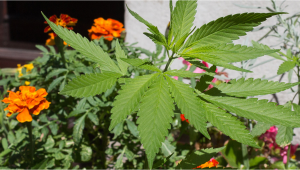
- 1. Companion plants
- 2. The history of companion planting
- 3. Different types of companion plants
- 4. Best companion plants for cannabis growing
- 4. a. Cover crops
- 4. b. Nitrogen fixers
- 4. c. Deterrents
- 4. d. Attractors
- 4. e. Food and herbs
- 5. Benefits of companion plants
- 6. What not to grow with your companion plants
- 7. Beneficial insects for your garden
- 7. a. Why use beneficial insects?
- 7. b. What beneficial insects can i use?
- 8. In conclusion
Growing cannabis alone, either indoor or outdoor, leaves them exposed to the elements and can result in problems like mold or bugs. Just like all cannabis, including feminized seeds, companion plants also produce terpenes so planting the right ones at the right time can help you combat pests, improve soil, and invite beneficial microorganisms to your garden.
1. Companion plants
Companion planting is a method of cultivation where specific plants are grown together for their properties and benefits, promoting a natural ecosystem. This method is super old, dating back to the beginning of agriculture itself, back then farmers didn’t have synthetic products to combat pests so they tried with aromatic vegetation and realized the benefits of this technique. These aromatic herbs and cover crops are a natural way to protect your grow from pests and diseases, they can attract beneficial bugs that feed on harmful species, some also can combat mold and fungi that can attack your garden.
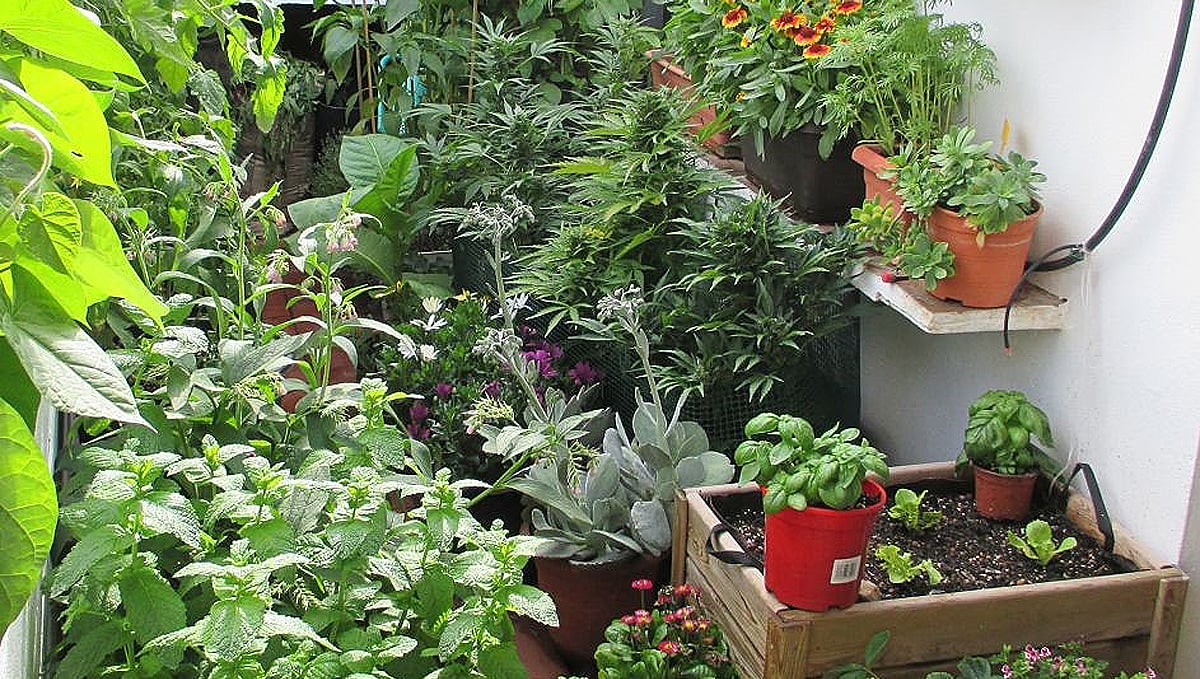
This happens because plants produce terpenes and other compounds that can deter or attract pests and can live in a beneficial relationship with marijuana. Now, most growers stick to growing Cannabis but by mimicking nature and maintaining the right biodiversity you can not only avoid problems but also improve soil quality and help fixate nutrients in the soil, resulting in more resiliency to pathogens and a healthier garden.
2. The History of Companion Planting
Companion planting of beneficial plants has been a practice for many centuries, dating back to the ancient Egyptians and Greeks (and possibly even further back than that, although there are no historical records to back this up). The idea of planting different plants together, in order to maximize their mutual benefits and minimize their potential downsides is anything but new, and while modern-day horticulturalists have science to back up this practice, the benefits have been widely known for a very long time. Some cultures even believed that certain plant combinations could bring fertility or ward off disease.
Ancient Romans planted garlic around rose bushes and cucumber plants to ward off pests. But they also took this one step further when the realization was made that rose bushes and grapevines are susceptible to the same mold issues, with one caveat. White powdery mildew is one of the most devastating issues a vineyard can face, but by simply planting rose bushes throughout the vines, the 'Vintners' (the vine growers) had a better chance of stopping the spread throughout the grapes. This is because the mildew first attacks the roses, and then the vines.
The North American Hidatsa and Iroquois tribes planted corn, squash, and beans together in a technique known as the “three sisters”. This technique worked amazingly well, due to the fact that the three crops work in a symbiotic manner - The corn acts as a support structure for the beans, the beans act as a nitrogen fixer for the soil, and the squash minimizes the chance of pests infestations, while also adding much need mulch to the surrounding soil. And, on top of this, the three crops complement each other in terms of nutritional value.
The beans provide protein, the squash offers a range of vitamins and is a great source of fiber, and the corn is full of carbs. Other cultures around the world have also practiced companion planting for centuries. In Asia, for example, farmers often plant lemon grass near onion and garlic beds to ward off pests, while in Central America, marigolds are often planted near vegetables to keep away certain bugs. Today, horticulturalists have conducted their own studies on companion planting and the results show that this practice is a valuable tool for all gardeners, cannabis or not. Planting companion plants can help to improve soil fertility and aeration, ward off certain pests, and provide additional nutrients to the soil. In addition to this, companion planting can add a splash of color to your garden and attract beneficial insects to help ward off all those annoying little critters that like to spoil our fun.
3. Different types of companion plants
Even though companion plants are any type of vegetation that can have a beneficial relationship with your cannabis, there are different types. Depending on the type of plant and herb, it can have different effects, from preventing bugs to improving soil and the nutrients available in it, you need to have in mind that each one brings different benefits.
Cover crops
Cover crops help in the texture of your soil, help protect beneficial microbes and manage nutrients, making them more available when needed.
Nitrogen fixers
Nitrogen fixers pull nitrogen into the soil, which is used by Cannabis in photosynthesis, have in mind that nitrogen fixers don’t do it on their own, they need other plants and especially bacteria to do it properly.
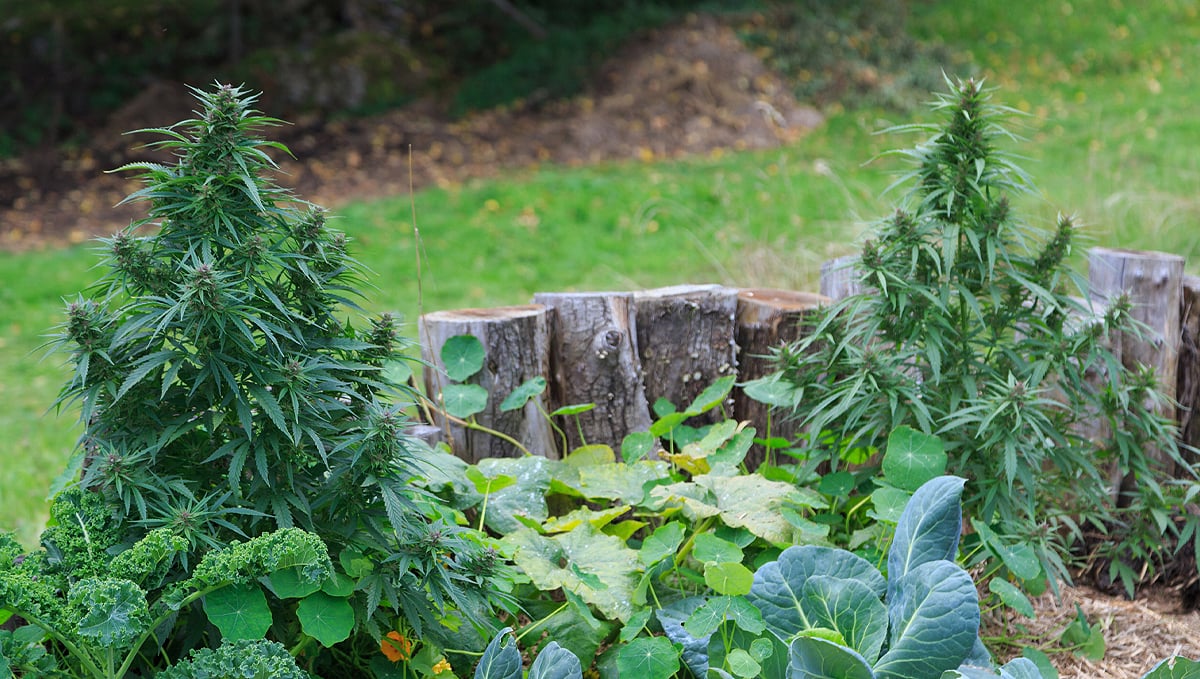
Deterrents
Deterrents emit strong odors, the terpenes produce by them is usually avoided by bugs and other pests, helping you keep your garden bug-free.
Attractors
Attractors are those that attract pollinators and other beneficial bugs. Beneficial bugs can feed on other bugs like whiteflies or aphids, helping you control pests on your cannabis.
Foods and herbs
Foods and herbs that can be consumed by usually don’t bring as many benefits as the other ones cited above but are a good choice to keep your soil active and maintain the microorganisms alive.
4. Best Companion Plants for Cannabis Growing
Even though in nature this type of vegetation are whatever grows naturally and most aromatic herbs can work, there are some of them that can be more effective than others. If you’re looking for the best plants to grow in between your cannabis, here are the best.
Cover crops
Cerastium
Cerastium (Cerastium tomentosum) is a fast-growing cover crop that spreads across the top of the soil, retaining moisture and protecting microbial life in the soil.
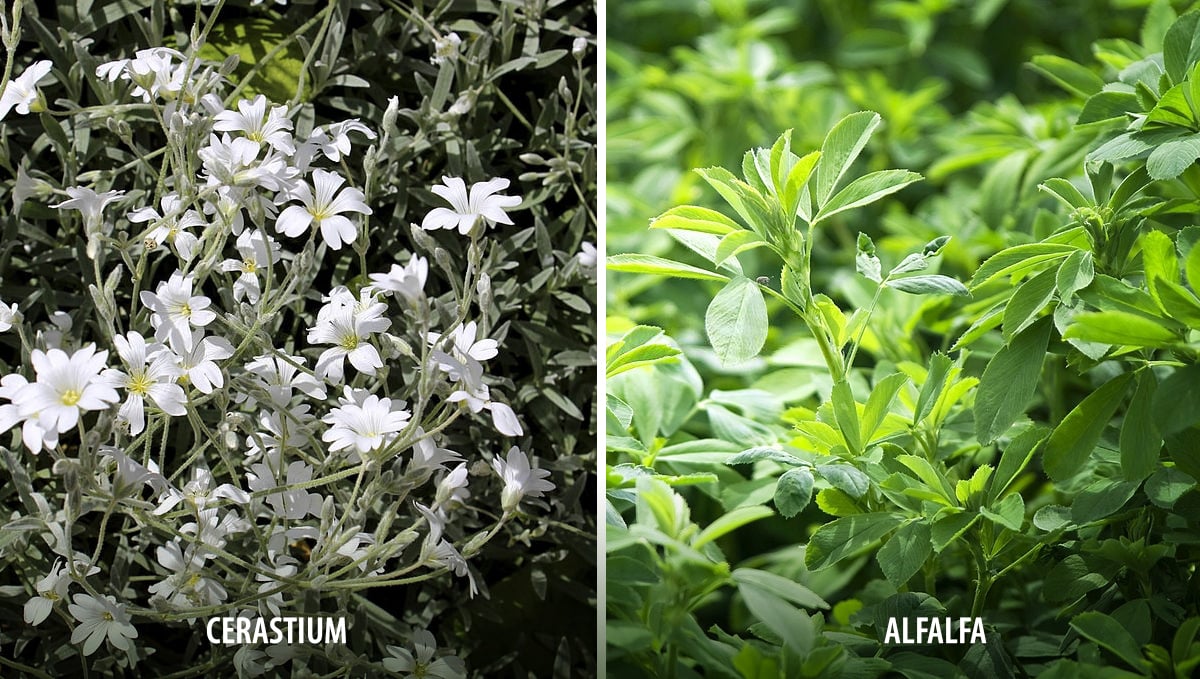
Alfalfa
Alfalfa ( Medicago sativa) is another cover crop that works with bacteria in the soil by drawing in nitrogen from the atmosphere, boosting vegetative growth and due to the deep roots, increases water penetration keeping the roots hydrated.
Nitrogen fixers
Yarrow
Yarrow (Achillea millefolium) not only can attract beneficial nitrogen-fixing bacteria that can help you combat or prevent aphids but also boost the production of essential oils in plants nearby, resulting in better tasting buds.
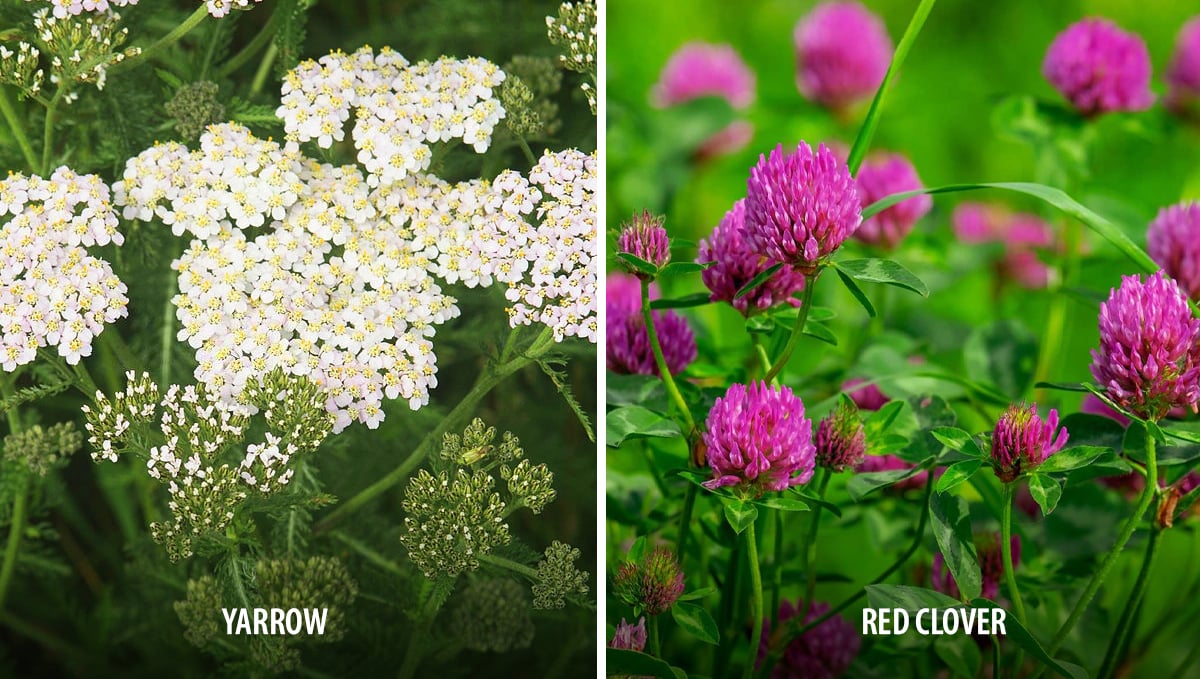
Red clover
Red clover (Trifolium pratense) apart from attracting beneficial bugs, it’s a plant that works with nitrogen-fixing bacteria to pull high amounts of nitrogen from the atmosphere, improving and encouraging plant matter growth.
Chervil
Chervil (Anthriscus cerefolium) is a plant that helps to increase essential oils in neighboring plants, making them taste better and smell more fragrant. It also has the added benefit of being a nitrogen-fixing species, meaning that it can help improve the fertility of your soil.
Deterrents
Lavender
Lavender (Lavandula spica) are beautiful plants that emit a strong odor and just like coriander, it will attract a lot of beneficial insects to your garden and prevent harmful bugs from getting into your garden while also helping mask the strong cannabis smell.
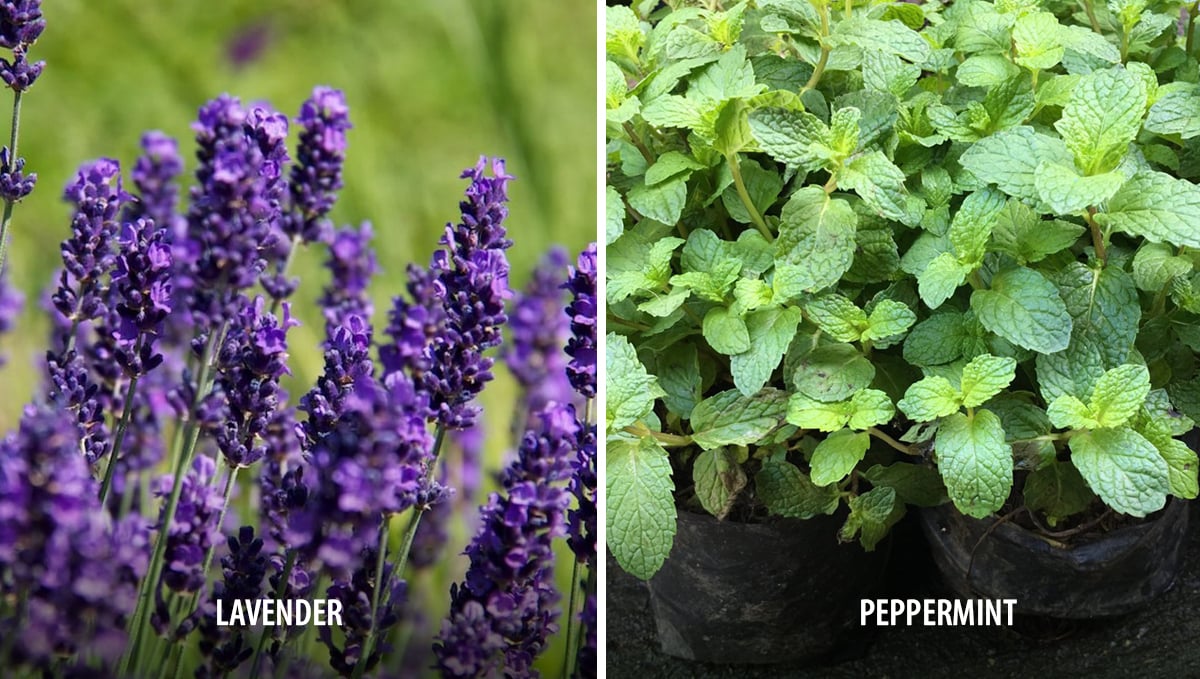
Peppermint
Peppermint (Mentha balsamea), as you may know, emits a strong smell, this aroma prevents pests like ants, fleas, aphids, and even mice while helping you mask the pungent odor that reeks during flowering.
We recommend keeping a close eye on peppermint because they can take over your garden so it’s better that you grow them in individual containers.
Attractors
Dill
Dill (Anethum graveolens) is a member of the celery family, this plant produces a pungent smell that provides protection against caterpillars and spider mites.
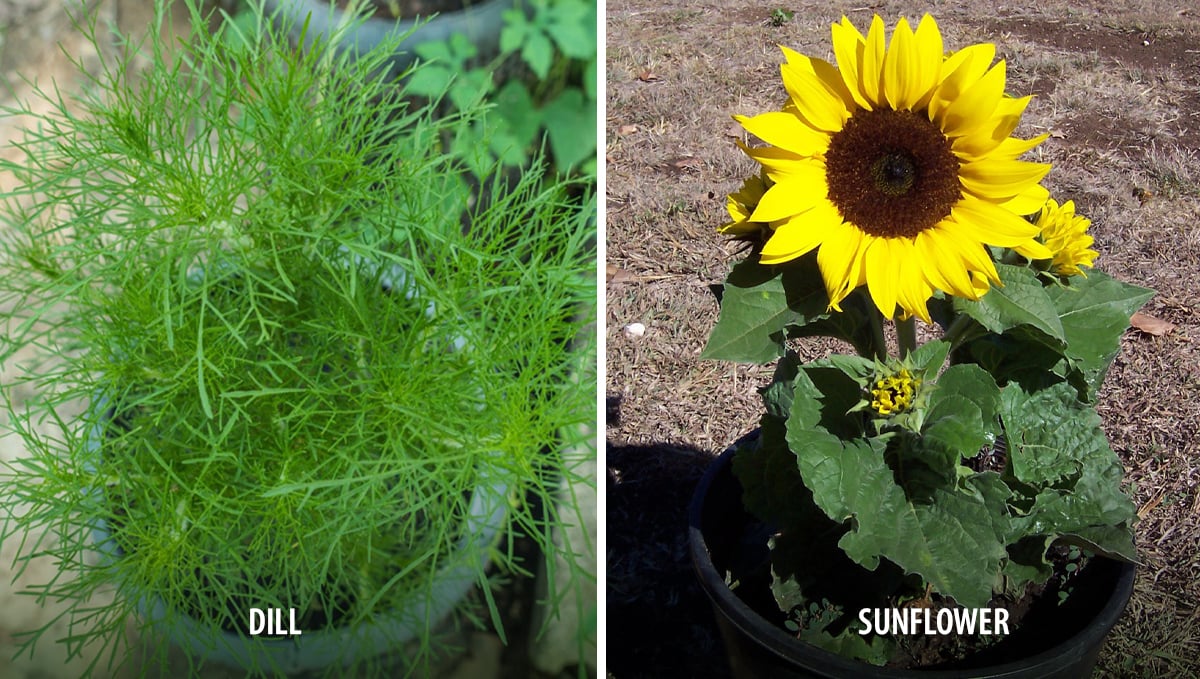
Sunflower
Sunflower (Helianthus), apart from adding beauty to your garden, attracts the attention of bugs like aphids, whiteflies, and snails, protecting your garden from them.
White Clover
White clover is a perfect companion plant for any outdoor cannabis garden. Not only does this legume bind nitrogen in the soil, but its deep roots are also able to bring up additional minerals and nutrients from the deeper soil layers that are usually inaccessible to cannabis root areas. Additionally, white clover produces small flowers that help attract beneficial insects, while also reducing the number of weeds that can invade your space.
Marigold
Marigolds (Tagetes spp.) are great at attracting beneficial insects, such as parasitic wasps, and helping to ward off unwanted pests. In addition to this, marigolds can help with the health of any soil they’re planted in by naturally releasing toxic compounds that can reduce pest populations.
Lemon Balm
Lemon balm (Melissa officinalis) is a perfect addition to an outdoor weed grow thanks to its strong aroma, which can be used to mask those delicious, pungent aromas that will inevitably arise in the last few weeks before harvest. As an added bonus, lemon balm can attract beneficial insect predators which will help reduce the likelihood of pests invading your grow.
Food and herbs
Sweet Basil
Sweet Basil (Ocimum basilicum) is one of the most aromatic herbs and just as we can smell it (and love it) bugs do to. The herb attracts various harmful insects like beetles and aphids, keeping them away from your cannabis.
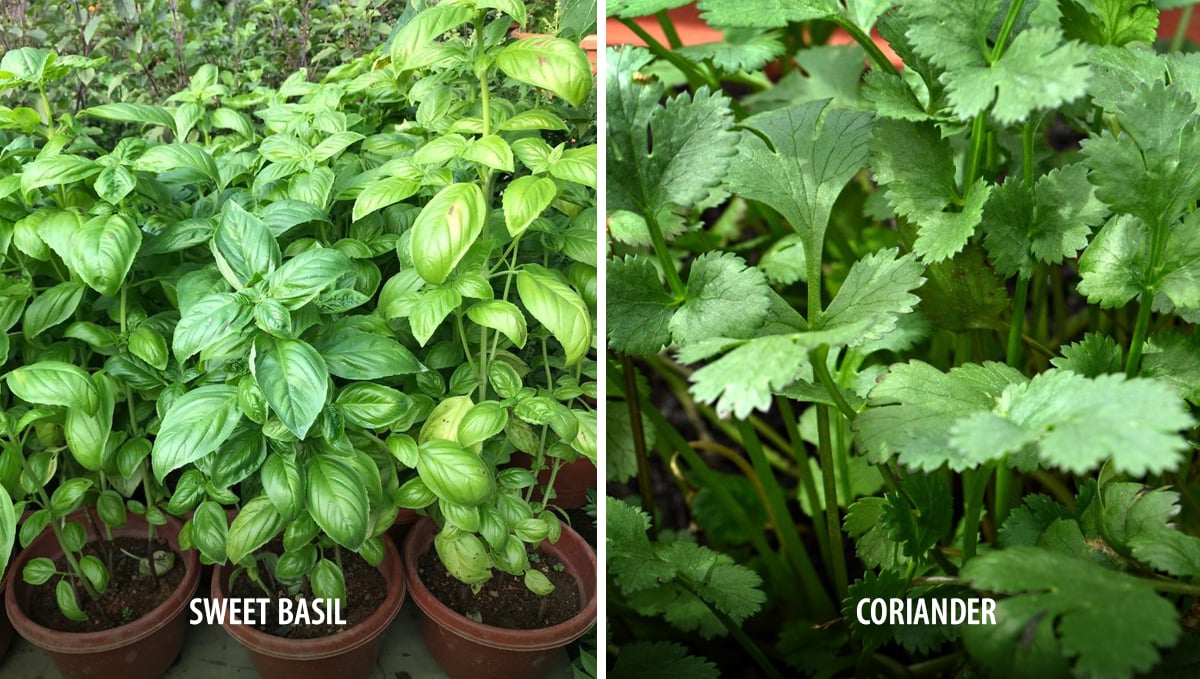
Coriander
Coriander (Coriandrum sativum) produces a smell that spider mites, beetles, and aphids cannot stand, protecting your cannabis against pests and also, can attract wasps that feed on these bugs, keeping the pest population down.
Chamomile
Chamomile (Matricaria chamomilla) is a great companion plant for any cannabis garden and has a myriad of benefits. It is an excellent source of nitrogen, it helps to attract beneficial insects that feed on pest and disease-causing organisms, while also repelling nematodes that can damage cannabis root systems. Additionally, chamomile tea has been known to help reduce stress, making it a perfect accompaniment to weed as it can be used in place of tobacco for spliffs.
5. Benefits of companion plants
This technique is based on the principle of permaculture which proposes that every agricultural activity should be sustainable and self-sufficient, meaning they are closed-loops systems and everything that goes in has to be recycled. This technique works like that in a way because everything that goes into your garden will result in food, beneficial vegetation or microorganisms, compost, and nutrients, and nothing will go to waste because it literally goes back into the soil.
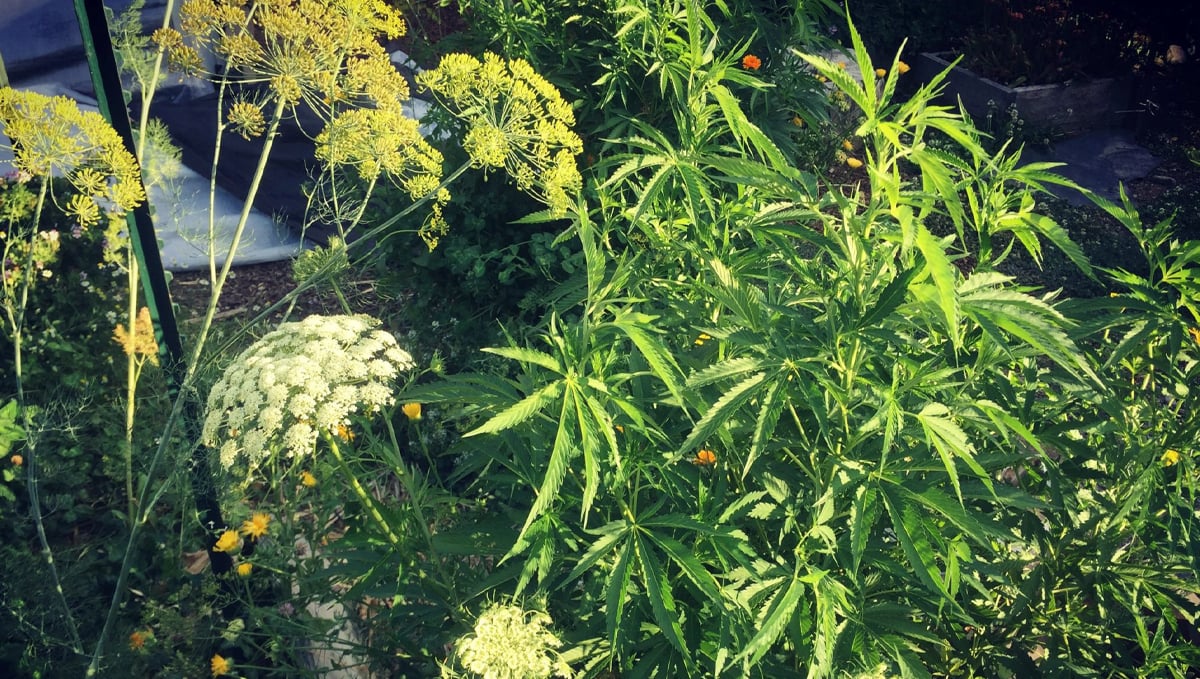
Trap cropping
Trap cropping consists of drawing attention away from your cannabis by having trap crops that pests and bugs prefer, even though you’re sacrificing some of them, your cannabis will be secure and bug-free.
Camouflage
One of the benefits of having this kind of relationship in your garden (apart from the beauty of a healthy garden) is that depending on the size and plants used, you can effectively camouflage your cannabis like in a guerilla grow style.
Improving soil fertility
The soil fertility can be improved by having nitrogen fixers that fixate the nitrogen from the atmosphere. Vegetations like clover and peas develop a symbiotic relationship that helps fix nitrogen in the soil that can be used by your cannabis, other vegetation, and microorganisms.
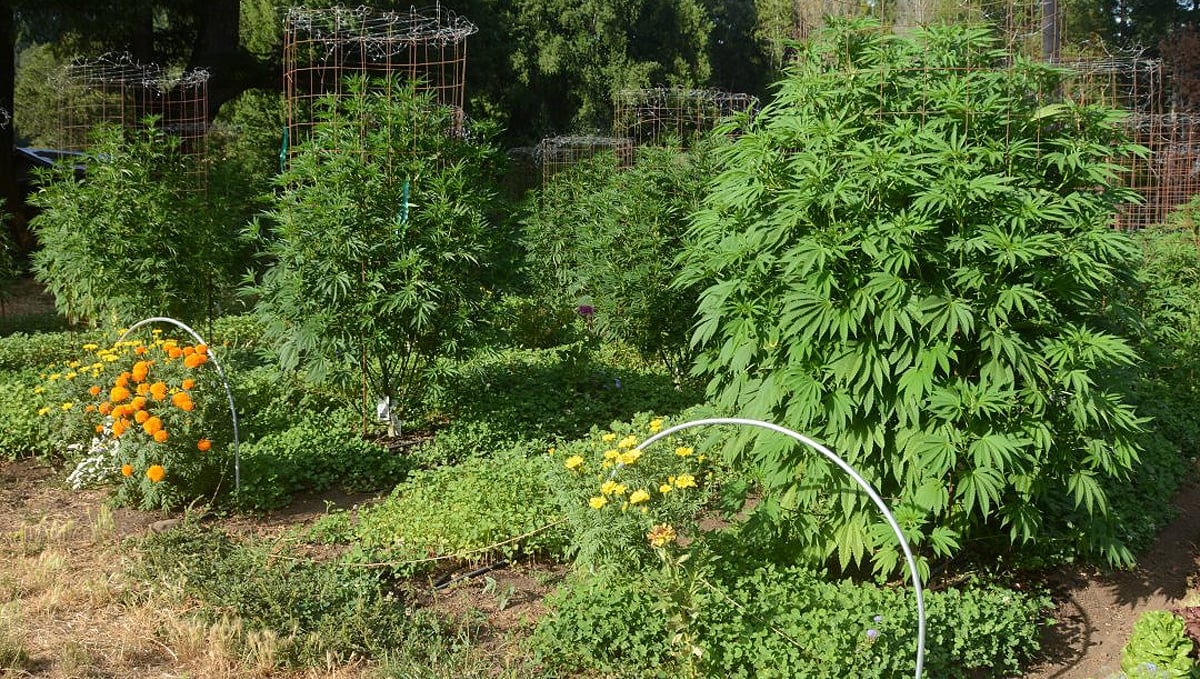
Biological pest control
Some companions release chemicals from the roots or leaves that help prevent pests because some of these compounds can influence the growth, survival, and reproduction of some organisms.
Beneficial spatial interactions
Companion planting can provide beneficial spatial interactions, this means that taller plants (which prefer more sun) can share the same space as shorter ones (which prefer a bit of shadow, resulting in higher yields from that space of land.
6. What not to grow with your companion plants
Even though companions bring a lot of benefits, you have to be careful when choosing, planting unsuitable companions can end up affecting them in a bad way so you can take a look at this table to know exactly which ones to avoid.
What not to grow with your companions
| Beneficial | Unsuitable |
|---|---|
| Cerastium | Angelica, Fennel |
| Yarrow | Allium family (onion, garlic, chives…), Rue |
| Lavender | Thyme, Rue |
| Peppermint | Lavender, Dill, Coriander |
| Dill | Cilantro or Coriander |
| Sunflower | Pole beans |
| Sweet basil | Thyme, Rue |
| Coriander | Dill |
Now, this doesn’t mean you cannot have them together, for example, you can have dill and coriander in the same growing space but in different places and, preferably, a couple of meters from each other.
7. Beneficial Insects For Your Garden
Just like there are beneficial plants and herbs that can protect your cannabis plants, there are also beneficial insects that can help you deal with harmful bugs without the need to use chemical pesticides or other products. So for all of you who prefer keeping things as natural as possible, beneficial insects are the right choice.
Why use beneficial insects?
If you’ve grown cannabis or any other plant before, you know that it takes patience and effort, so you really don’t want bugs munching on your precious plants. Pests such as Aphids, Whiteflies, and Spider mites are often common on cannabis plants, especially when growing outdoors.
These bugs can end up killing your cannabis plants and are really easy to get rid of with chemical products but you really don’t want your flowers to have a harsh unpleasant taste, so this is where beneficial bugs come in as they are a natural and safe way to keep harmful insects under control.
What beneficial insects can I Use?
If you’re looking to get your hands on beneficial insects to keep harmful bugs in check, here are the most common ones used by cannabis growers.
Ladybugs
Ladybugs are easy to recognize and kinda cute, but they’re lethal predators that love to eat aphids, eating upwards to 60 aphids per day. Ladybugs can also help you take care of whiteflies and mites, among other harmful bugs.
Green Lacewings
Green lacewings are predatory bugs that love to eat aphids and can also help you take care of mealybugs but keep in mind that this type of insect also loves cilantro and sunflowers, so always make sure to know what the specific bug eats in order to avoid having problems with other plants in your garden.
Delphastus Catalinae
Delphastus Catalinae is a relative of the ladybug and is known as the whitefly predator as they can eat upwards to 100 whitefly eggs or adults per day, they are highly recommended to keep the whitefly population in check!
Praying Mantis
Praying mantis are probably the most popular beneficial insect known as it eats a lot of harmful bugs such as aphids, flies, and mosquitoes. Some praying mantis species are endangered so make sure to respect nature and do not go around catching them but you can try attracting them by growing dill, fennel, or marigolds. You can also buy praying mantis eggs online but remember that these insects will fly away once they’ve eaten all the bugs so you will have to keep buying mantis eggs every time, although it’s better to do this instead of using chemical fertilizers.
8. In conclusion
Companion planting is a natural and very effective way of improving your soil and cannabis in general, either with better soil, preventing pests, or just by keeping the moisture locked in, these plants will aid you in the process of growing cannabis. Have you ever benefited from a symbiotic relationship while growing cannabis? If you have any tips or just want to share your experience, feel free to leave a comment in the comment section below!
External References:
- Benefits of Companion Planting in Gardening.- Leonard Githinji
- Companion Planting. - Reddy, P. (2017).
- Companion plants for predatory bugs. - Lambion, Jérôme & Ingegno, Barbara Letizia & Tavella, Luciana & Alomar, Oscar & Perdikis, Dionysios. (2016).
- Companion Plants and Mixed Cropping. - Mousaei Sanjerehei, Mohammad. (2017).









Comments